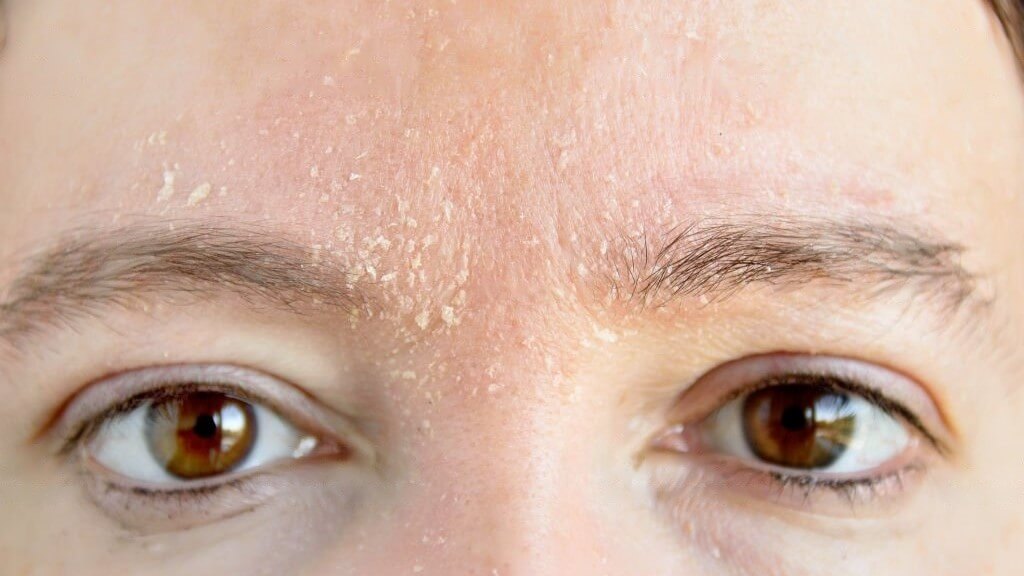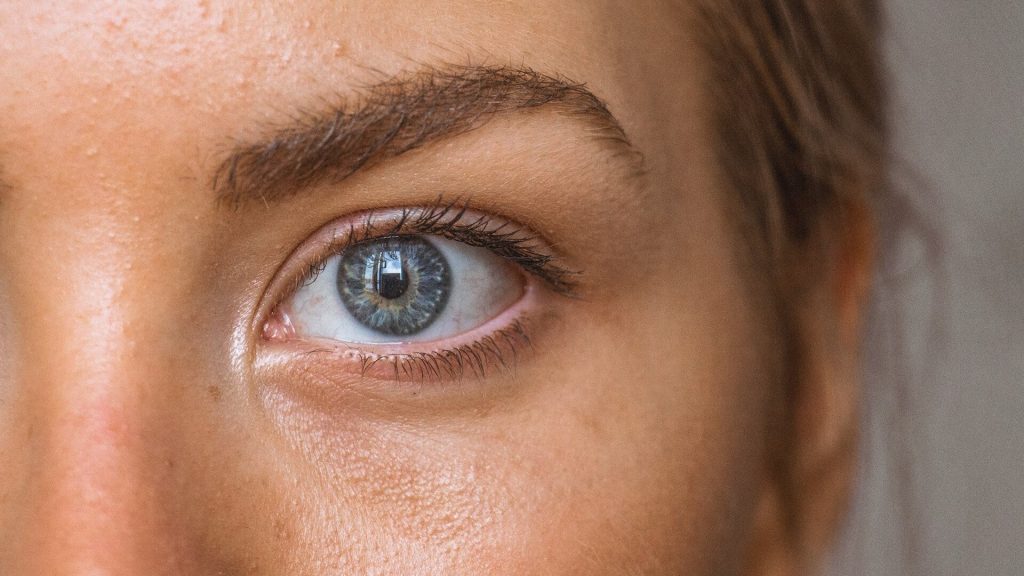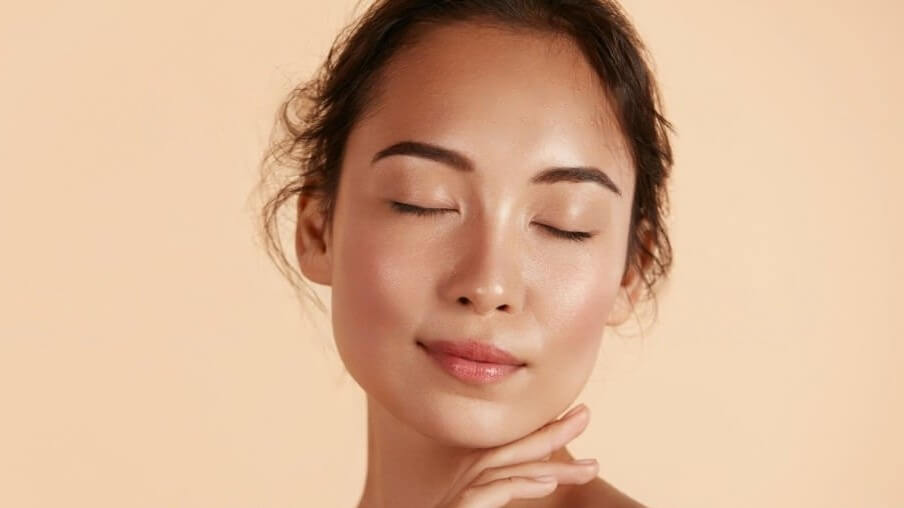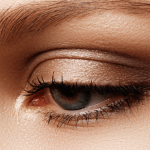Makeup is a versatile tool that empowers us to highlight our inherent beauty, express our creativity, and boost our self-esteem. Nevertheless, the journey to achieving impeccable makeup isn’t universal. Your skin type holds the key to determining which makeup products and techniques are best suited for you. Whether your skin type is oily, dry, combination, sensitive, or normal, comprehending how to personalize your makeup for different skin types is vital to achieving a radiant and enduring appearance.
This comprehensive guide will explore makeup for different skin types, delivering expert insights and product recommendations to help you look and feel your best. From foundation to lipstick, we will cover every aspect, ensuring that your makeup enhances your distinctive beauty rather than concealing it.
Understanding Your Skin Type
Before we delve into the specifics of makeup for different skin types, it’s imperative to identify your skin type. Skin type can change over time due to various factors such as age, climate, and hormonal fluctuations. The five main skin types are as follows:
- Oily Skin:
Oily skin is characterized by a consistent shine, particularly in the T-zone (forehead, nose, and chin). It is prone to enlarged pores and acne breakouts.- Causes of Oily Skin:
Oily skin is often due to overactive sebaceous glands, which produce excess oil (sebum). This can be influenced by genetics, hormones, and environmental factors. - Common Concerns:
People with oily skin may struggle with issues like acne, blackheads, and an uneven skin texture.
- Causes of Oily Skin:
- Dry Skin:
Dry skin tends to feel tight, appear flaky, and may have a lackluster appearance. It often exhibits sensitivity and can be susceptible to redness and fine lines.- Causes of Dry Skin:
Dry skin occurs when the skin’s natural moisture barrier is compromised. Factors like harsh weather, hot showers, and certain skincare products can contribute to dryness. - Common Concerns:
Individuals with dry skin often experience itching, redness, and a feeling of tightness or discomfort.
- Causes of Dry Skin:
- Combination Skin:
Combination skin presents a combination of oily and dry areas. Typically, the T-zone is oily, while the cheeks and jawline tend to be dry.- Causes of Combination Skin:
Genetics and hormonal fluctuations can lead to combination skin. The T-zone tends to have more active oil glands, while the rest of the face may have drier areas. - Common Concerns:
Balancing the needs of both oily and dry areas can be a challenge, as it may involve using different products on different parts of the face.
- Causes of Combination Skin:
- Sensitive Skin:
Sensitive skin can react adversely to a variety of products, manifesting as redness, itching, or irritation. It may alternate between feeling tight and dry or oily and prone to breakouts.- Causes of Sensitive Skin:
Sensitive skin is often a result of a weakened skin barrier, making it more susceptible to external irritants. Allergens, fragrances, and certain ingredients can trigger reactions. - Common Concerns:
People with sensitive skin must be cautious about product choices to avoid redness, burning sensations, and breakouts.
- Causes of Sensitive Skin:
- Normal Skin:
Those blessed with normal skin enjoy a well-balanced complexion that is neither excessively dry nor oily. Normal skin exudes health and comfort.- Characteristics of Normal Skin:
Normal skin typically has a smooth texture, minimal pores, and an even tone. It feels comfortable and rarely experiences extreme dryness or oiliness.
- Characteristics of Normal Skin:
Now that you’ve discerned your skin type, let’s dive into the makeup tips and techniques that are tailored to your specific needs.
Makeup for Oily Skin

Oily skin can be challenging to manage, but with the right makeup products and techniques, you can effectively control excess shine and ensure your makeup stays in place throughout the day.
- Primer:
Initiate your makeup routine with an oil-free primer. This step serves to create a flawless canvas for makeup application. Look for primers with mattifying properties to curb excess oil production.- Choosing the Right Primer:
Opt for a primer specifically formulated for oily skin. Ingredients like salicylic acid and niacinamide can help control oil and minimize the appearance of pores.
- Choosing the Right Primer:
- Foundation:
When selecting a foundation for oily skin, opt for formulas that are matte and oil-free. Powder foundations or mineral foundations work exceptionally well for this skin type, providing both coverage and oil control.- Foundation Formulas for Oily Skin:
Matte liquid foundations or powder foundations are ideal for oily skin, as they help absorb excess oil and provide a long-lasting matte finish.
- Foundation Formulas for Oily Skin:
- Setting Powder:
After applying foundation, make sure to set your makeup with a translucent setting powder. Concentrate on the T-zone and areas that are prone to oiliness. This step is vital for locking in your makeup and preventing it from sliding off.- Translucent Setting Powders:
Look for setting powders with ingredients like silica, which help absorb oil and reduce shine without adding extra layers of makeup.
- Translucent Setting Powders:
- Blotting Papers:
Keep blotting papers in your bag for quick touch-ups during the day. These handy sheets absorb excess oil without disturbing your makeup.- Using Blotting Papers:
Gently blot your face with these papers to remove excess oil. Avoid rubbing, as it can disrupt your makeup.
- Using Blotting Papers:
- Oil-Free Makeup Remover:
At the end of the day, ensure thorough cleansing with an oil-free makeup remover. This will effectively eliminate makeup without adding extra oil to your skin.- Gentle Makeup Removers:
Opt for micellar water or oil-free makeup removers that are designed to dissolve makeup and impurities while being gentle on the skin.
- Gentle Makeup Removers:
Makeup for Dry Skin

Dry skin yearns for hydration and radiance. Select makeup products that infuse moisture and a healthy glow into your complexion.
- Hydrating Primer:
Begin with a hydrating primer to nourish and prepare your skin prior to makeup application. This step helps to combat dryness and promotes a smoother makeup application.- Choosing a Hydrating Primer:
Look for primers enriched with ingredients like hyaluronic acid and glycerin, which provide intense hydration and create a barrier to lock in moisture.
- Choosing a Hydrating Primer:
- Liquid Foundation:
Opt for a liquid foundation with a dewy finish to infuse moisture and luminosity into your skin. Avoid matte formulas, as they can accentuate dry patches and make your skin appear dull.- Dewy Finish Foundations:
Foundations labeled as “dewy” or “radiant” are your best bet for achieving a luminous look. These formulations often contain hydrating ingredients.
- Dewy Finish Foundations:
- Cream Blush and Highlighter:
Cream blushes and highlighters are excellent choices for dry skin. They blend seamlessly, providing a radiant flush of color while adding a dewy glow to your complexion.- Cream Blush Application:
Dab cream blush onto the apples of your cheeks and blend gently with your fingers for a natural, flushed look. - Highlighter Placement:
Apply cream highlighter to the high points of your face, including the tops of your cheekbones, the bridge of your nose, and your brow bone, to create a luminous glow.
- Cream Blush Application:
- Setting Spray:
Conclude your makeup routine with a hydrating setting spray. This step not only locks in moisture but also ensures your skin remains fresh and radiant throughout the day.- Hydrating Setting Sprays:
Look for setting sprays infused with ingredients like aloe vera, rosewater, or glycerin to keep your skin hydrated and makeup in place.
- Hydrating Setting Sprays:
- Gentle Makeup Removal:
To maintain your skin’s hydration balance, use a gentle makeup remover or micellar water specifically designed for dry skin. This ensures thorough cleansing without stripping away essential oils.- Micellar Water Benefits:
Micellar water is renowned for effectively removing makeup while retaining skin moisture. It’s an excellent choice for those with dry skin.
- Micellar Water Benefits:
Makeup for Combination Skin

Balancing makeup for combination skin entails addressing both oily and dry areas to achieve an even and harmonious finish.
- Balancing Primer:
Choose a primer that caters to both dry and oily areas of your face. Apply a mattifying primer to the T-zone, where oil tends to accumulate, and use a hydrating primer on dry patches.- Two-in-One Primers:
Some primers are formulated to address both dry and oily areas, making them an excellent choice for combination skin.
- Two-in-One Primers:
- Foundation Matching Your Skin:
Your choice of foundation should align with the distinct needs of different areas of your face. Opt for a matte foundation in the T-zone to control oil, and use a hydrating foundation on the cheeks and jawline to combat dryness.- Foundation Mixing:
For a precise match, consider mixing two different foundations—one matte and one hydrating—on your face to address the varying needs of your skin.
- Foundation Mixing:
- Blotting Papers and Setting Powder:
Keep blotting papers at your disposal to manage oiliness throughout the day. Additionally, apply setting powder to areas prone to shine as needed.- Blotting Strategy:
Focus blotting on the T-zone and areas where oiliness is most pronounced. This helps maintain a balanced appearance.
- Blotting Strategy:
- Targeted Highlighter and Blush:
Apply blush and highlighter specifically to the dry areas of your face to prevent emphasizing oiliness in the T-zone.- Blush Placement:
Apply blush to the apples of your cheeks and blend outward toward your temples. This technique accentuates your cheekbones without adding shine to the T-zone. - Highlighter on Dry Areas:
Concentrate highlighter on the high points of your face without extending it to the T-zone. This ensures a radiant but not overly shiny finish.
- Blush Placement:
- Dual-Action Makeup Remover:
Choose a dual-action makeup remover designed to effectively eliminate makeup while maintaining the balance of your skin. This step is crucial for ensuring both dry and oily areas receive proper care.- Micellar Water for Combination Skin:
Micellar water is an excellent choice for combination skin, as it effectively removes makeup while being gentle on sensitive or dry areas.
- Micellar Water for Combination Skin:
Makeup for Sensitive Skin

Sensitive skin calls for gentle, hypoallergenic makeup products that minimize the risk of irritation or redness.
- Hypoallergenic Products:
Prioritize makeup products that are labeled as hypoallergenic and fragrance-free. These formulations reduce the likelihood of adverse skin reactions.- Why Hypoallergenic?:
Hypoallergenic products are formulated with ingredients that are less likely to trigger allergies or irritation, making them ideal for sensitive skin.
- Why Hypoallergenic?:
- Mineral Makeup:
Mineral makeup is often well-tolerated by sensitive skin. It provides natural coverage without clogging pores or causing irritation.- Mineral Makeup Ingredients:
Mineral makeup typically contains ingredients like zinc oxide and titanium dioxide, which offer sun protection and anti-inflammatory properties.
- Mineral Makeup Ingredients:
- Patch Testing:
Before applying new products to your face, always conduct a patch test. This precautionary measure helps ensure that the product doesn’t trigger any adverse reactions.- How to Patch Test:
Apply a small amount of the product to a discreet area of your skin, such as the inner wrist. Wait 24-48 hours to check for any signs of irritation or redness.
- How to Patch Test:
- Gentle Makeup Removal:
Choose a mild, hypoallergenic makeup remover or micellar water specifically formulated for sensitive skin. This ensures effective makeup removal without overburdening your skin.- Micellar Water for Sensitive Skin:
Micellar water is gentle and effective at removing makeup without causing irritation. It’s a go-to choice for sensitive skin.
- Micellar Water for Sensitive Skin:
- Minimalist Approach:
Embrace a minimalist makeup routine. By reducing the number of products on your skin, you lower the risk of irritation and sensitivity. Focus on essentials and avoid unnecessary layers of makeup.- Essential Makeup Products:
Stick to basic makeup products like foundation, concealer, and mascara to minimize the chance of irritation.
- Essential Makeup Products:
Makeup for Normal Skin

Individuals with normal skin have the freedom to experiment with various makeup products and styles, but a few guidelines can enhance their natural beauty.
- Versatile Primer:
A lightweight, hydrating primer can provide a smooth canvas for makeup application. It enhances the longevity of your makeup while maintaining your skin’s balance.- Primer Benefits for Normal Skin:
A primer can help makeup adhere better and can also fill in fine lines and pores for a smoother finish.
- Primer Benefits for Normal Skin:
- Choose Your Finish:
Depending on your desired finish, select makeup products that align with your skin’s natural radiance. Whether you prefer matte, dewy, or satin finishes, normal skin allows you to experiment with various options.- Matte Finish:
If you prefer a matte look, choose matte foundation and setting powder. Matte products help control shine and provide a velvety finish. - Dewy Finish:
For a luminous, dewy appearance, opt for foundations with a radiant or dewy finish. These products add a healthy glow to normal skin.
- Matte Finish:
- Play with Colors:
Normal skin types have the flexibility to experiment with a wide range of makeup colors and styles.- Exploring Bold Colors:
Feel free to experiment with bold eyeshadow colors, lip shades, and blushes that complement your undertones and personal style.
- Exploring Bold Colors:
- Easy Makeup Removal:
For the effortless removal of makeup, utilize a gentle makeup remover. This helps maintain your skin’s balance without excessive cleansing.- Balancing Makeup Removal:
Use a makeup remover that effectively removes makeup without over-drying or over-moisturizing your skin.
- Balancing Makeup Removal:
Conclusion
Makeup is indeed an art form, and like any art, it necessitates the right tools and techniques. Understanding your skin type is the foundational step in mastering the art of makeup for different skin types. By judiciously selecting suitable products and adhering to tailored application methods, you can amplify your inherent beauty and craft an impeccable, long-lasting appearance that accentuates your distinct features.
Always bear in mind that makeup should never mask your natural beauty; instead, it should enhance it. Whether you possess oily, dry, combination, sensitive, or normal skin, embrace your uniqueness and let makeup be your ally in showcasing your true self. Armed with the correct knowledge and a sprinkle of creativity, you can unlock the full potential of makeup for different skin types, allowing your inner beauty to radiate brilliantly.

